Massive gastrointestinal bleeding after endoscopic rubber band ligation of internal hemorrhoids: A case report
Massive gastrointestinal bleeding after endoscopic rubber band ligation of internal hemorrhoids: A case report
Massive gastrointestinal bleeding after endoscopic rubber band ligation of internal hemorrhoids: A case report
Massive gastrointestinal bleeding after endoscopic rubber band ligation of internal hemorrhoids: A case report
Rubber band ligation hemorrhoids – Højsgaard – Gastroenterologist

Hemorrhoid Treatment in the Outpatient Gastroenterology Practice Using the ORegan Disposable Hemorrhoid Banding System is Safe and Effective | Semantic Scholar Semantic Scholar
Outpatient treatment of hemorrhoids by gastroenterologists using the CRH-O’Regan Disposable Hemorrhoid Banding System is safe and effective and can be employed in the office or endoscopy center, and patients do not require time off from work after the procedure. Objectives: Hemorrhoids are a common disorder and a major cause of rectal bleeding and perianal discomfort. Nonendoscopic rubber band ligation (RBL) is an effective treatment for hemorrhoids, but to date, this technique has not been widely employed by gastroenterologists. The purpose of this study was to evaluate the efficacy, complications, success rate, and recurrence rate at 3 months for the CRH-O’Regan Disposable Hemorrhoid Banding System in the outpatient gastroenterology setting. Methods: Eleven physicians at 7 locations, including offices and endoscopy centers, in a single-specialty gastroenterology practice employed the CRH-O’Regan Disposable Hemorrhoid Banding System after completing initial standardized inservice training. A total of 113 adult patients of all ages underwent hemorrhoid banding from June through November 2008. These included men (n = 62, 55%) and women (n = 51, 45%), with an average age of 54 years (range, 19–78). A total of 257 banding events were performed either in the office (n = 56, 50%) or in the endoscopy center (n = 57, 50%). Eight patients (7%) had prior hemorrhoid surgery. Indications for RBL included rectal bleeding alone (n = 62, 55%) or multiple symptoms (n = 51, 45%). External hemorrhoids were not treated in this study. Internal hemorrhoid grading included grade I (n = 8, 7%), grade II (n = 84, 74%), and grade III (n = 21, 19%). The data were abstracted retrospectively from the clinical chart. Safety data was abstracted for all 113 cases. Response data were abstracted for patients completing 2 or more RBL sessions (n = 76, 67%). A 3-month follow-up questionnaire was subsequently sent to each of these 76 patients. Results: Initial symptoms were resolved in 71 of 76 patients (94%). Rectal bleeding resolved in 90% of patients after at least 1 banding event. Complications included severe immediate discomfort (n = 1, 0.8%), thrombosis (n = 1, 0.8%), urinary hesitancy (n = 2, 1.8%), and near-syncope (n = 1, 0.8%). Severe bleeding occurred in 1 patient (0.8%). Severe pain occurred in 1 patient (0.8%). There were no cases of pelvic sepsis. No patient required time off because of the procedure. At the 3-month follow-up, symptom resolution or improvement, including rectal bleeding and discomfort, was noted in more than 80% of respondents. Conclusion: Outpatient treatment of hemorrhoids by gastroenterologists using the CRH-O’Regan Disposable Hemorrhoid Banding System is safe and effective. This is a novel, nonendoscopic approach to treating common symptoms of internal hemorrhoids, such as rectal bleeding, perianal discomfort, and other associated complaints. It can be employed in the office or endoscopy center, and patients do not require time off from work after the procedure.
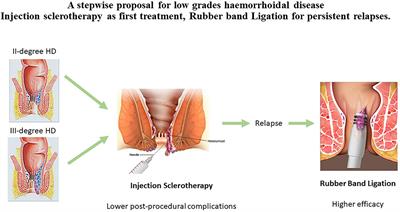
Frontiers | A Stepwise Proposal for Low-Grade Hemorrhoidal Disease: Injection Sclerotherapy as a First-Line Treatment and Rubber Band Ligation for Persistent Relapses
Outpatient treatments are actually the techniques of choice in the management of low-grade hemorrhoidal disease. Among these, rubber band ligation (RBL) and injection sclerotherapy (IS) are the most frequently performed. Both techniques are used, without one having been determined to be superior over the other. We analyzed the studies that compare these two techniques in terms of efficacy and safety in order to offer a proposal for treatment choice. RBL seems to be most efficient in terms of symptom resolution for second-degree hemorrhoidal disease and equal or superior for treatment of third-degree disease. However, IS offers lower rates of severe post-operative pain and minor complications. Since outpatient treatments are offered to patients as painless options that allow a prompt recovery, we propose a stepwise protocol using 3% polidocanol or aluminum potassium sulfate and tannic acid IS as the first treatment option, as it has less complications, followed by RBL in cases of relapse.
Hemorrhoidal disease: Diagnosis and management – Mayo Clinic
Rubber band ligation has been shown to be a safe, effective and painless therapy for grade I and grade II hemorrhoids. Although less durable than surgical excision, it is also less costly, has fewer complications and zero recovery time.
Internal Hemorrhoid Band Ligation: Background, Indications, Contraindications
Endoscopic hemorrhoid band ligation (HBL) is an important advancement in the treatment of symptomatic internal hemorrhoids (IH). This procedure is simple, safe, and effective.

What Is Rubber Band Ligation For Hemorrhoids? – inSite Digestive Health Care
There are treatments available to help bring relief from this common condition. Rubber band ligation can relieve the symptoms of hemorrhoids.

Hemorrhoids: The Definitive Guide to Medical and Surgical Treatment – Consult QD Left Arrow Right Arrow email email
Heres a comprehensive review of how to diagnose and grade hemorrhoids, as well as how to select the appropriate medical or surgical treatment based on current clinical evidence.
Hemorrhoidal Band Ligation Sugar Land | Best Endoscopist Humble | Kingwood, Katy
Hemorrhoidal band ligation, which is also known as rubber band ligation is a procedure that involves tying the hemorrhoid at its base with a rubber band, cutting off the blood flow to the hemorrhoid.
Anal Surgery for Hemorrhoids Technique: Rubber-Band Ligation, Coagulation, Sclerotherapy
Relevant Anatomy Hemorrhoidal cushions are anal cushions of tissue composed of blood vessels, smooth muscle, and connective tissue. These cushions are located in the upper anal canal at 3 different sites: left lateral, right anterolateral, and right posterolateral quadrant.

Hemorrhoid Treatment in the Outpatient Gastroenterology Practice Using the ORegan Disposable Hemorrhoid Banding System is Safe and Effective | Semantic Scholar Semantic Scholar
Outpatient treatment of hemorrhoids by gastroenterologists using the CRH-O’Regan Disposable Hemorrhoid Banding System is safe and effective and can be employed in the office or endoscopy center, and patients do not require time off from work after the procedure. Objectives: Hemorrhoids are a common disorder and a major cause of rectal bleeding and perianal discomfort. Nonendoscopic rubber band ligation (RBL) is an effective treatment for hemorrhoids, but to date, this technique has not been widely employed by gastroenterologists. The purpose of this study was to evaluate the efficacy, complications, success rate, and recurrence rate at 3 months for the CRH-O’Regan Disposable Hemorrhoid Banding System in the outpatient gastroenterology setting. Methods: Eleven physicians at 7 locations, including offices and endoscopy centers, in a single-specialty gastroenterology practice employed the CRH-O’Regan Disposable Hemorrhoid Banding System after completing initial standardized inservice training. A total of 113 adult patients of all ages underwent hemorrhoid banding from June through November 2008. These included men (n = 62, 55%) and women (n = 51, 45%), with an average age of 54 years (range, 19–78). A total of 257 banding events were performed either in the office (n = 56, 50%) or in the endoscopy center (n = 57, 50%). Eight patients (7%) had prior hemorrhoid surgery. Indications for RBL included rectal bleeding alone (n = 62, 55%) or multiple symptoms (n = 51, 45%). External hemorrhoids were not treated in this study. Internal hemorrhoid grading included grade I (n = 8, 7%), grade II (n = 84, 74%), and grade III (n = 21, 19%). The data were abstracted retrospectively from the clinical chart. Safety data was abstracted for all 113 cases. Response data were abstracted for patients completing 2 or more RBL sessions (n = 76, 67%). A 3-month follow-up questionnaire was subsequently sent to each of these 76 patients. Results: Initial symptoms were resolved in 71 of 76 patients (94%). Rectal bleeding resolved in 90% of patients after at least 1 banding event. Complications included severe immediate discomfort (n = 1, 0.8%), thrombosis (n = 1, 0.8%), urinary hesitancy (n = 2, 1.8%), and near-syncope (n = 1, 0.8%). Severe bleeding occurred in 1 patient (0.8%). Severe pain occurred in 1 patient (0.8%). There were no cases of pelvic sepsis. No patient required time off because of the procedure. At the 3-month follow-up, symptom resolution or improvement, including rectal bleeding and discomfort, was noted in more than 80% of respondents. Conclusion: Outpatient treatment of hemorrhoids by gastroenterologists using the CRH-O’Regan Disposable Hemorrhoid Banding System is safe and effective. This is a novel, nonendoscopic approach to treating common symptoms of internal hemorrhoids, such as rectal bleeding, perianal discomfort, and other associated complaints. It can be employed in the office or endoscopy center, and patients do not require time off from work after the procedure.
EHL | Advanced Gastroenterology Inc
What is Endoscopic Hemorrhoidal Ligation? Endoscopic Hemorrhoidal Ligation (EHL) or Rubber band ligation is one of the most widely used treatment for internal hemorrhoids. An applicator is used to place one or two small rubber bands around the base of the hemorrhoid, cutting off its blood supply. After 3-10 days, the rubber bands and the hemorrhoid fall off,

Hemorrhoidal Band Ligation Cypress TX | Internal Hemorrhoids Spring, TX
Gastroenterologist Dr Tunde Adeyefa in Cypress, Tomball, Spring and Houston, TX offers hemorrhoidal band ligation or rubber band ligation to treat internal hemorrhoids.

Hemorrhoids and Hemorrhoid Treatment – Gastro SB
Learn more about hemorrhoids and hemorrhoid treatment. This article includes information on different types of hemorrhoids and many home remedy options.
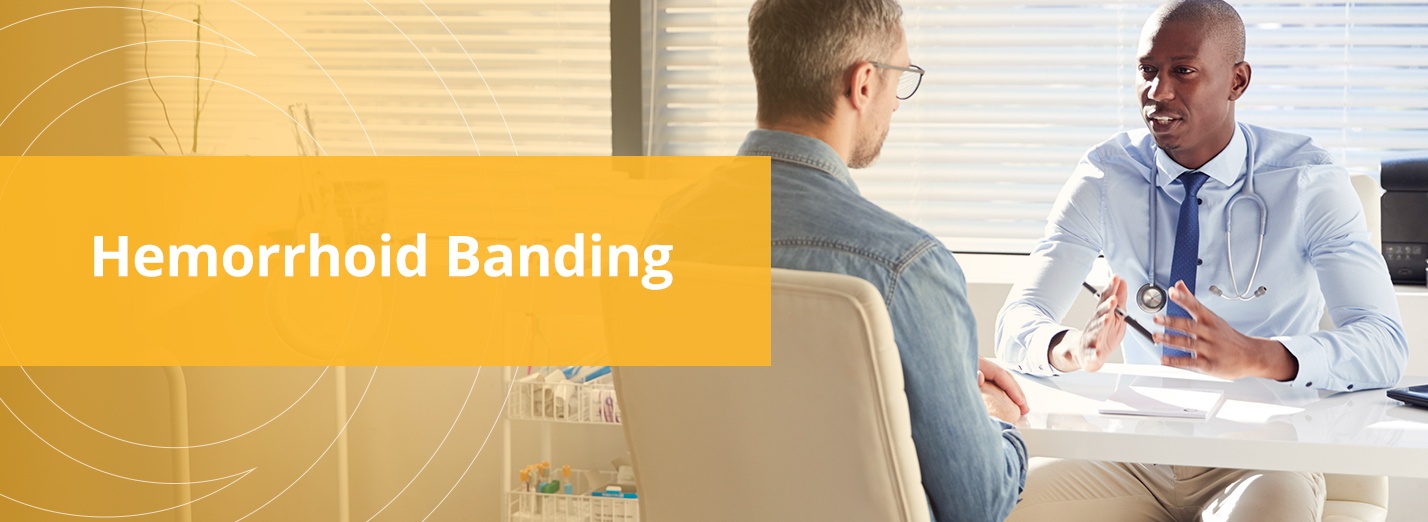
Hemorrhoid Banding: Everything to Know | CRH ORegan
Choosing a hemorrhoid treatment option can be overwhelming. Find out everything you need to know about hemorrhoid banding as an option here!

What Are Hemorrhoids? Symptoms, Causes, Diagnosis, Treatment, and Prevention
Hemorrhoids, also called piles, are enlarged and swollen veins around the outside of the anus or in the lower rectum. Theyre often caused by constipation and are very common in pregnant women. Learn how to prevent and get rid of them.
Internal Hemorrhoid Band Ligation Technique: Approach Considerations, Internal Hemorrhoid Banding, Complications
Endoscopic hemorrhoid band ligation (HBL) is an important advancement in the treatment of symptomatic internal hemorrhoids (IH). This procedure is simple, safe, and effective.
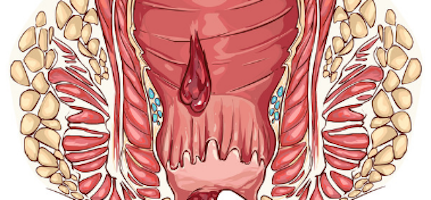
Hemorrhoid Banding: What to Expect – Gastroenterology Health Partners
Hemorrhoid banding helps get rid of highly symptomatic hemorrhoids Here’s what you need to know about hemorrhoid banding.

Hemorrhoids: The Definitive Guide to Medical and Surgical Treatment – Consult QD Left Arrow Right Arrow email email
Heres a comprehensive review of how to diagnose and grade hemorrhoids, as well as how to select the appropriate medical or surgical treatment based on current clinical evidence.
Hemorrhoids FAQs
Options for hemorrhoid treatment during colonoscopy
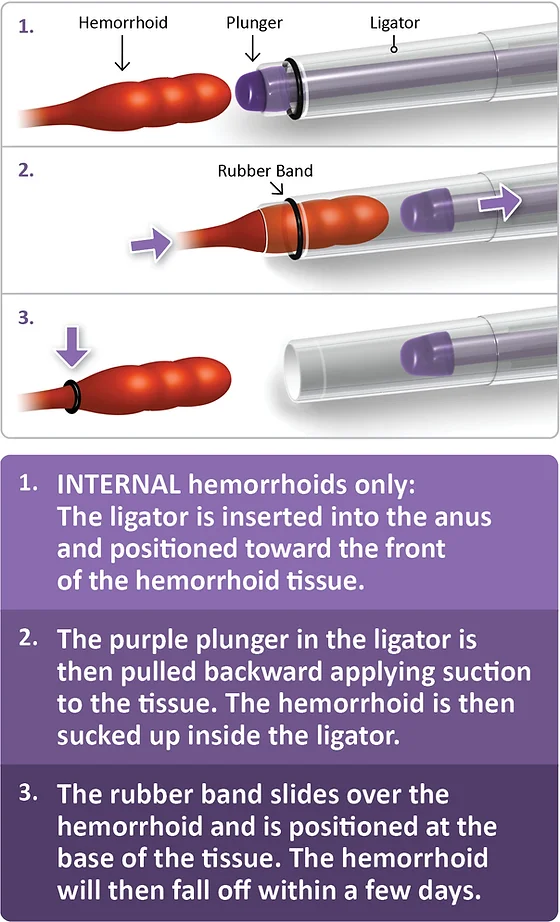
Hemorrhoid Banding – Gastroenterology Associates
The CRH O’Regan System® for hemorrhoid banding, or rubber band ligation, is a painless, proven, and effective solution to the problems associated with
![]()
Hemorrhoid Banding Article
A publicly available article also appearing in PubMed about Hemorrhoid Banding

Injection or banding of haemorrhoids | healthdirect
Injection or banding is usually a safe and effective way of treating haemorrhoids.

Hemorrhoids (Piles): Symptoms, Causes, Risk Factors, Prevention, Complication and Treatment | SurgMedia
Hemorrhoids (Piles): Symptoms, Causes, Risk Factors, Prevention, Complication and Treatment. Hemorrhoids also called piles, are often described as varicose veins of the anus and rectum, that are enlarged, bulging blood vessels in and around the anus and lower rectum. The rectum is the bottom section of your colon (large intestine). The two types of hemorrhoids, external hemorrhoids and internal hemorrhoids, refer to their location.

Hemorrhoids | SpringerLink
Hemorrhoids are one of the most frequent anorectal disorders encountered in the office setting and are responsible for considerable patient suffering and disability. Hemorrhoids that become symptomatic are initially treated conservatively with dietary changes and…
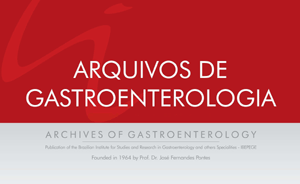
SciELO – Brasil – ENDOSCOPIC BAND LIGATION FOR THE TREATMENT OF HEMORRHOIDAL DISEASE ENDOSCOPIC BAND LIGATION FOR THE TREATMENT OF HEMORRHOIDAL DISEASE
ABSTRACT BACKGROUND: There are several therapeutic options for symptomatic hemorrhoids, from…
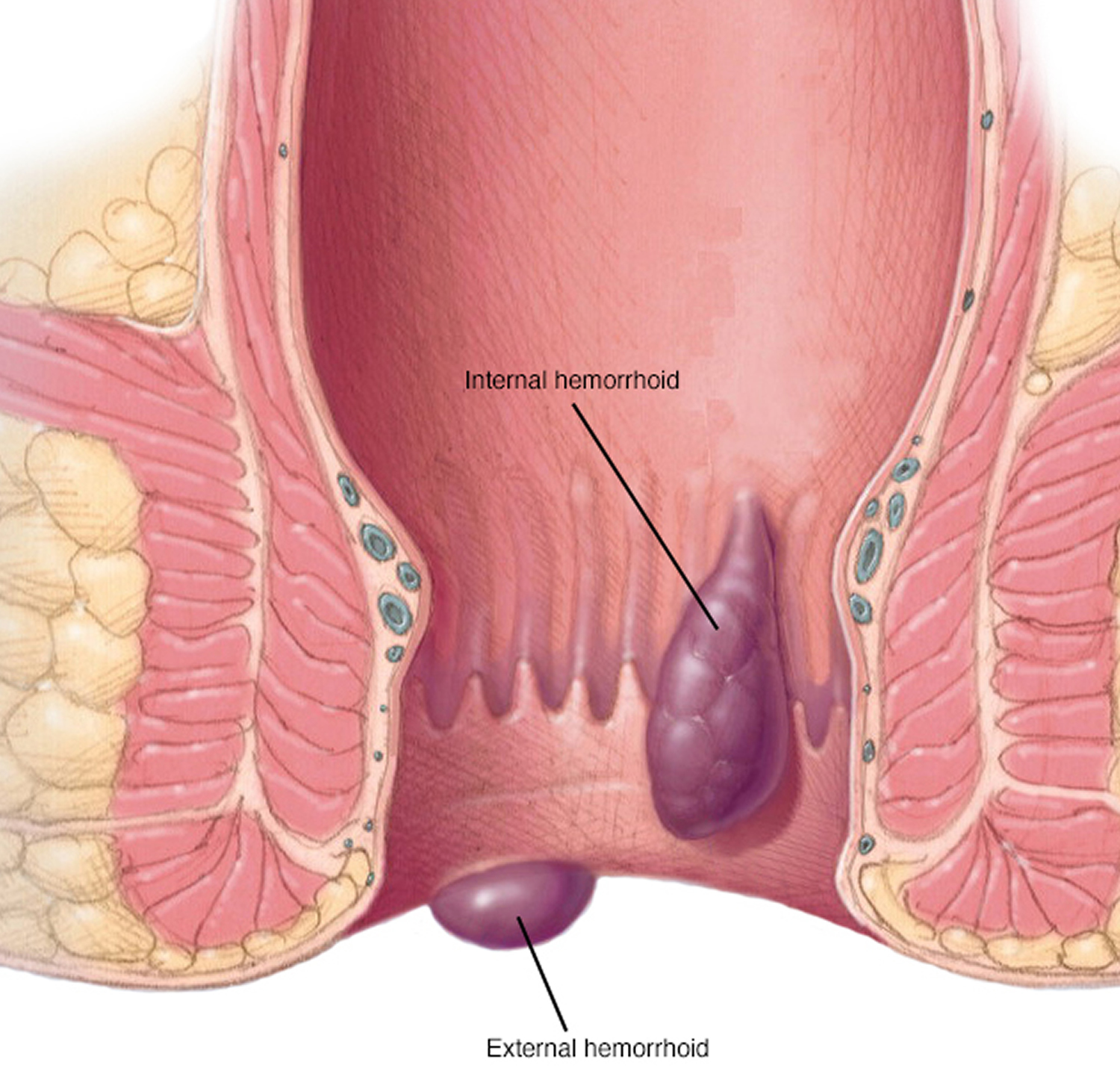
Hemorrhoids – Causes, Symptoms, Treatment & Home Remedies
What causes hemorrhoids, what they look like and what are the symptoms. How hemorrhoids are diagnosed & treated. Home remedies for hemorrhoids.
:max_bytes(150000):strip_icc()/GettyImages-928522936-9f3b413e50fd4e5dbbb59d52f25fe836.jpg)
Hemorrhoids: Types, Symptoms, Causes, Diagnosis, Treatment and More
Hemorrhoids are painful and annoying, but in many cases can be prevented with the right combination of lifestyle changes.

Symptomatic Hemorrhoid Treatment – Gastro SB
Hemorrhoids are a common disorder and not usually a serious condition. Learn about remedies for relief and treatments for hemorrhoids.
:max_bytes(150000):strip_icc()/GettyImages-691147751-5a00a897482c52001a1f08cf.jpg)
What to Expect During Hemorrhoidectomy Recovery
Are you considering hemorrhoid surgery? Find out what you can expect after hemorrhoid treatment and during your recovery.
